As an avid gardener and a mother, I’m always looking for fun tricks and tools to help me share my passion with my kids. Sometimes, it works out beautifully, and sometimes, it flops. But it always gets them out in the sunshine with their hands in the dirt, which means it’s at least a small win.
Over time, I’ve learned some things that don’t work (it’s hard to make weeding fun). The number one trick I have for getting your kids to enjoy gardening is to simply invite them and engage with them while they are there.
When we get time to work in the garden, it can sometimes be a mad rush to catch up. Inviting children to join in creates extra work, but it also teaches them valuable skills and gives them, and you, an opportunity to learn and share together.
Once you’ve made the space to invite your little ones into your garden, there are some great ways to engage them. These fun tricks and garden tools grab kids’ attention for various reasons and reward them with feelings of accomplishment.
Felco 14 Small Hand Pruner
The FELCO 14 combines exceptional ergonomics for smaller and also larger hands, as the inclined cutting head and smaller handles allow you to maximize your cutting power and comfort with every high quality cut you make.
Elevated Raised Bed/Fairy Garden
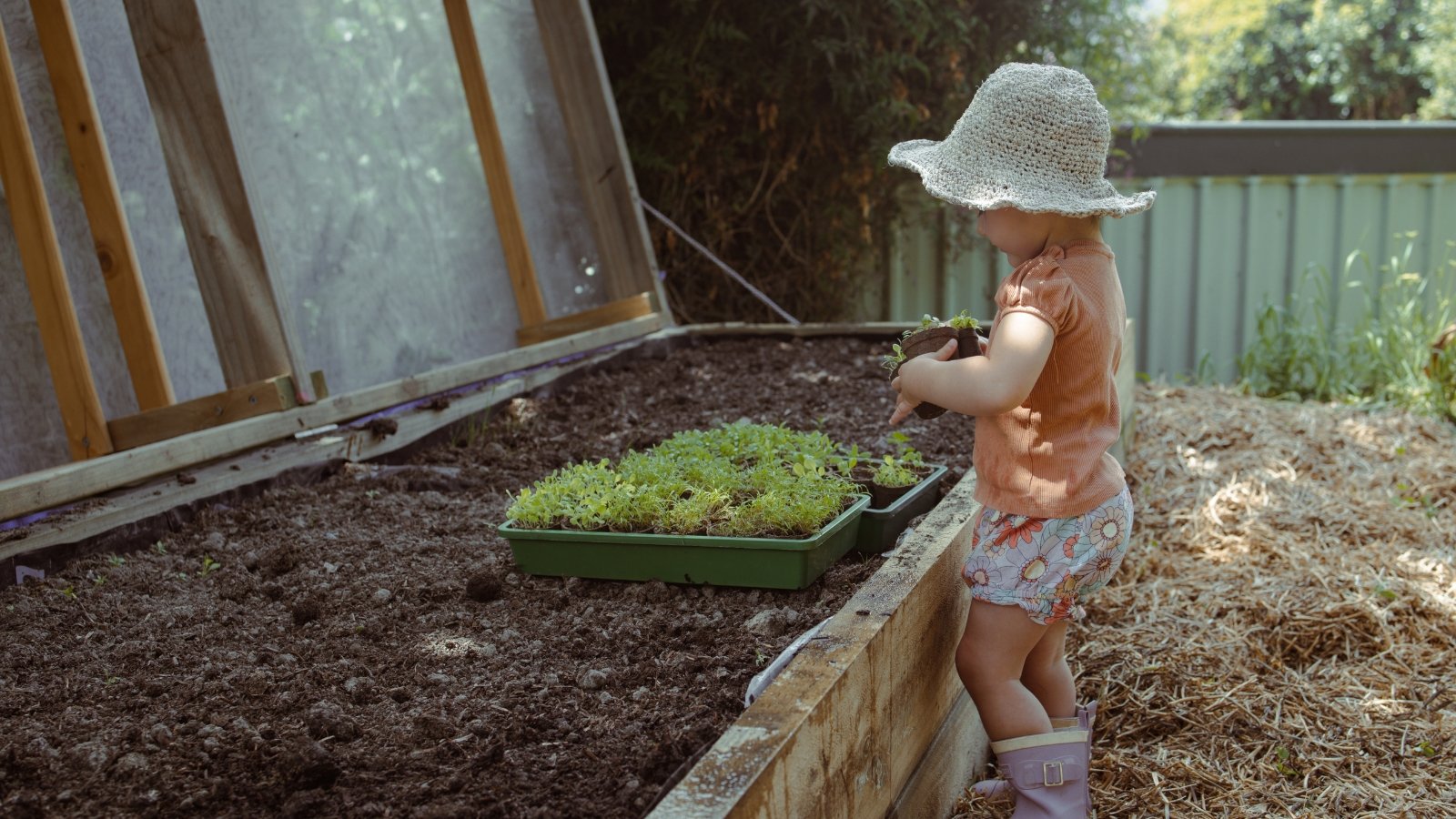
A small raised bed makes an excellent space for kids to experiment in the garden. It is versatile and a place for kids of all ages to explore and express themselves through play and experimentation.
My girls and I created a fairy garden several years ago, and we occasionally add seasonal items. They love creating new scenes and inventing personalities for their tiny magical friends. Naturally, the fairies are gardeners and must tend to their own plants.
Young children love to explore imaginative play on a smaller scale. Play, and in particular, role-play, helps kids develop important skills. Studies show that unstructured play is vital in children’s learning to interact with the world around them.
Giving older kids their own space to cultivate and care for creates a sense of competency and accomplishment. They will love having their spot to grow anything from flowers to vegetables. A raised bed can make this feel special and make it easier to control the soil and reduce weeds.
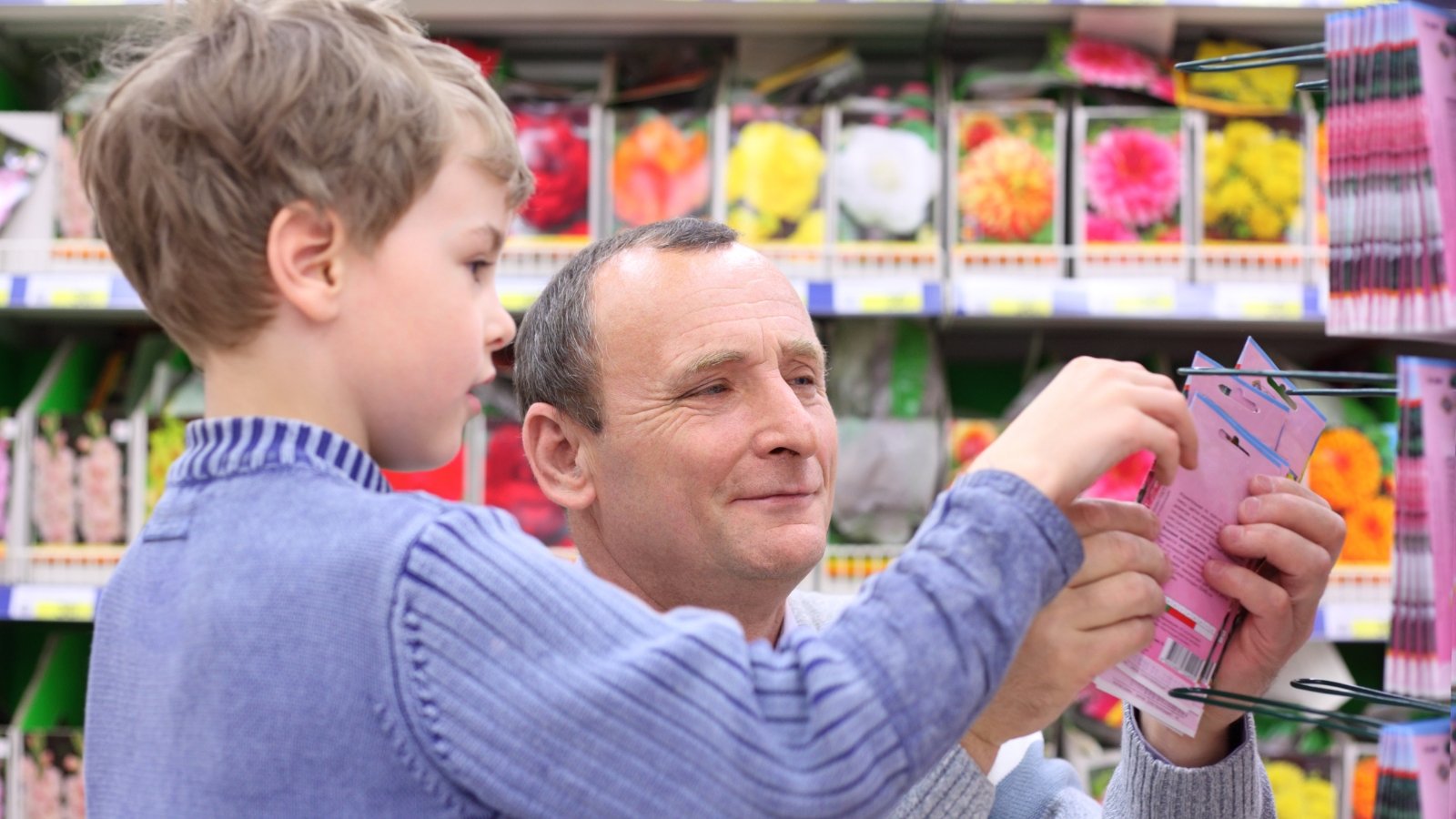
Selecting seeds for planting can be an exciting mission. In my experience, kids love having a say in things, and this is a simple area to let them take the reins. You might need to give them some guidance. This is a great way to teach them about climate zones.
Younger kids may need some guidance or be limited to choosing flowers they like. Perhaps you can select an assortment of seeds and ask little ones to choose their favorites. Older children who can read can learn to make their own determinations about what will work in your space.
Selecting seeds leads to discussions about soil, water, fertilizer, and pest control, among other interesting factors. It makes them feel as though they have an important and central role. Their involvement can help build their confidence and teach patience and nurturing with their seedlings.
Start Seeds Indoors
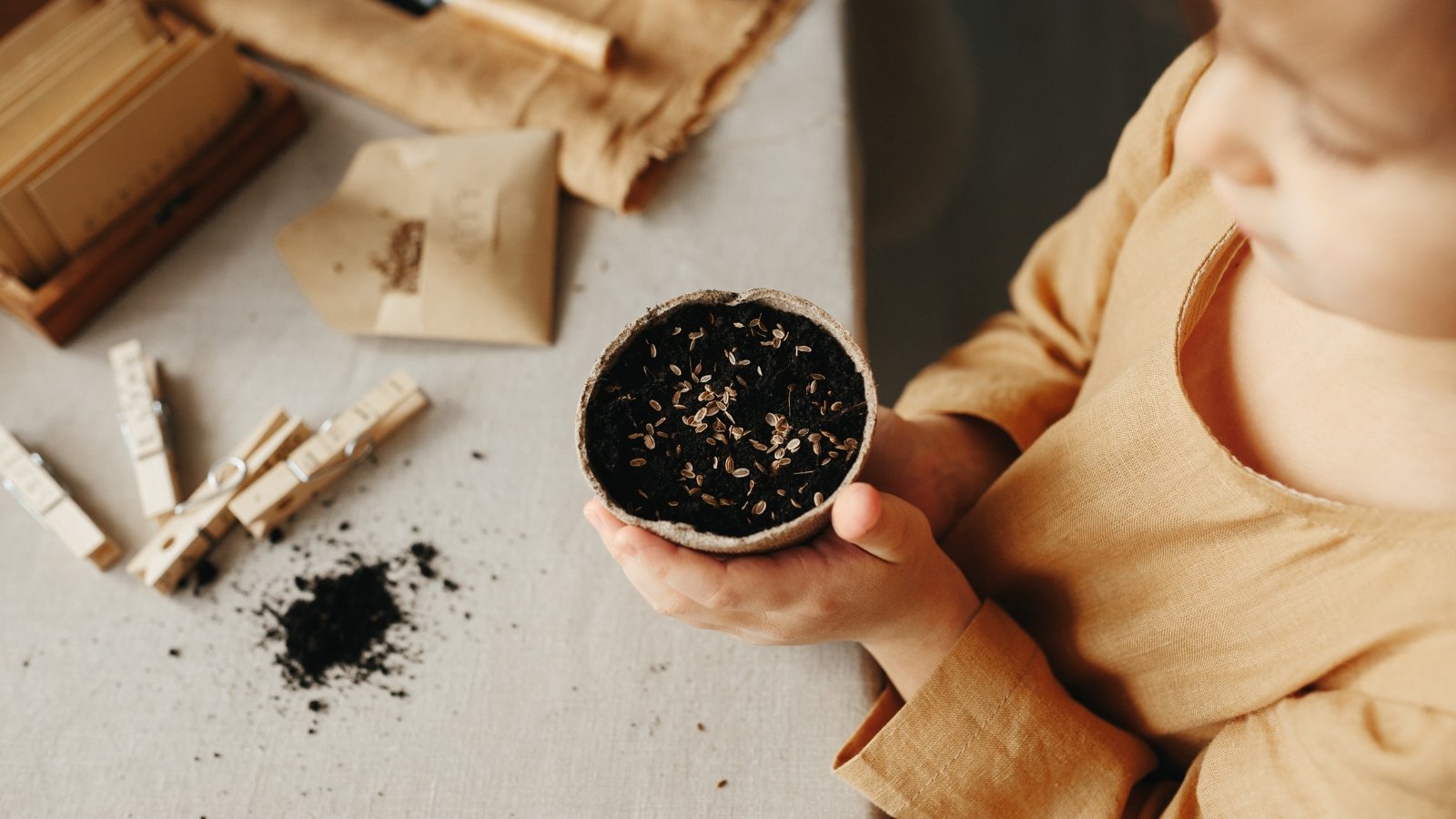
Are you hoping to get your little ones involved in the spring planting season? Winter can be a time of little action, and starting seeds indoors is a simple way to teach kids about germination. Keep your seed trays in a central location where kids will remember to check on them daily. They will delight in watching things pop up and begin to develop.
You’ll need either a brightly lit window or grow lights to start seeds indoors. Grow lights add another aspect to learning about how seeds germinate. A child can play the ‘sun’ and turn the lights on and off each day.
Giving them small, reasonable responsibilities makes children feel like they play an important role. They will naturally be more interested in tending to the plants they helped to grow.
Let Them Choose Their Own Plants
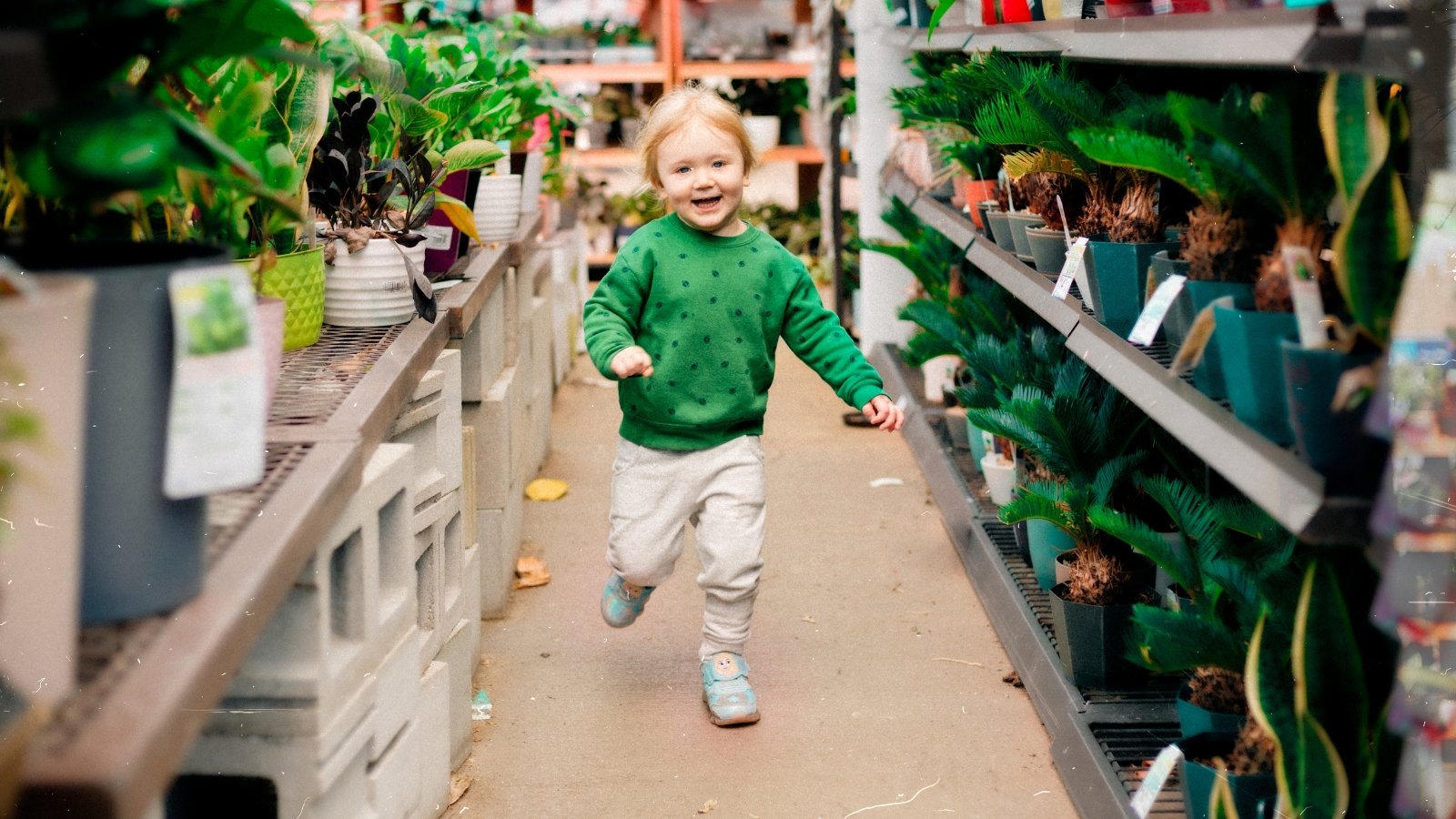
In the same way that choosing seeds engages them, kids will love having the freedom to choose plants from the nursery. Next time you select some new plants for the garden, take your child along and let them talk about and select plants they love.
Before you go, discuss where you’ll be planting these new additions. Have them identify the amount of sun they will receive. Then, check out the soil and explain what thrives in it.
You can introduce them to different plants once they know what to look for. Alternatively, let them select a plant or two and research it when you get home. Help them find the right location for their selections and give them the right care.
Play With Color
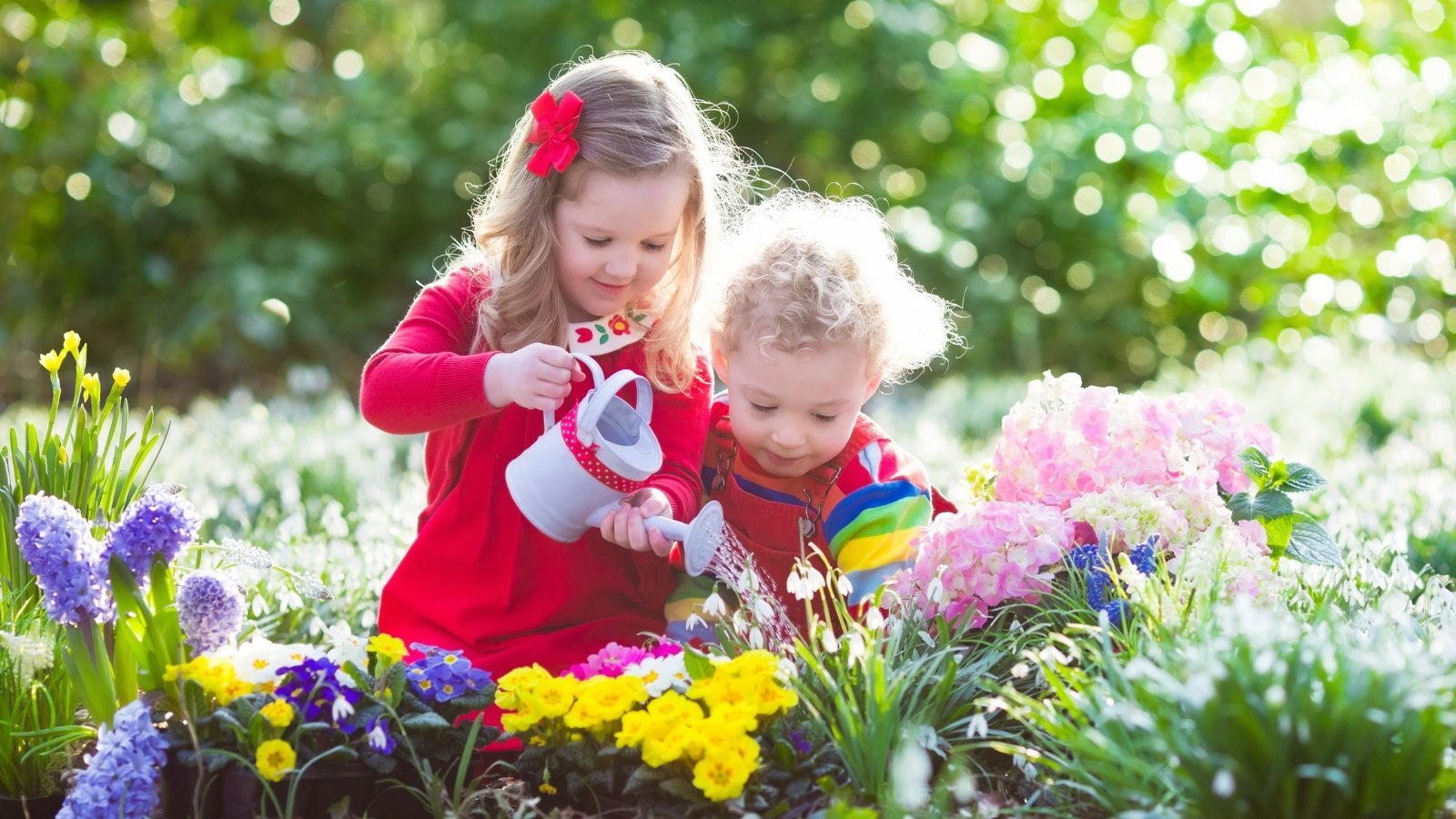
Does your child have a favorite color? Why not create a bed full of flowers in that color? See how many shades of that color you can find, and help them create a space that expresses something about themselves.
There are other cool ways to play with color. Have them help you create a moon garden. Grow things that have white flowers in this space. Many things specifically bloom at night, and many of them are fragrant.
Create this space somewhere that is obscured by artificial lights. Spend time there in the evening and after dark on nights with a full or nearly full moon. Notice how the flowers reflect the moonlight. Enjoy jasmine, gardenias, and tuberoses, which all have fragrant, white flowers that release their scent in the evening.
Make a Topiary
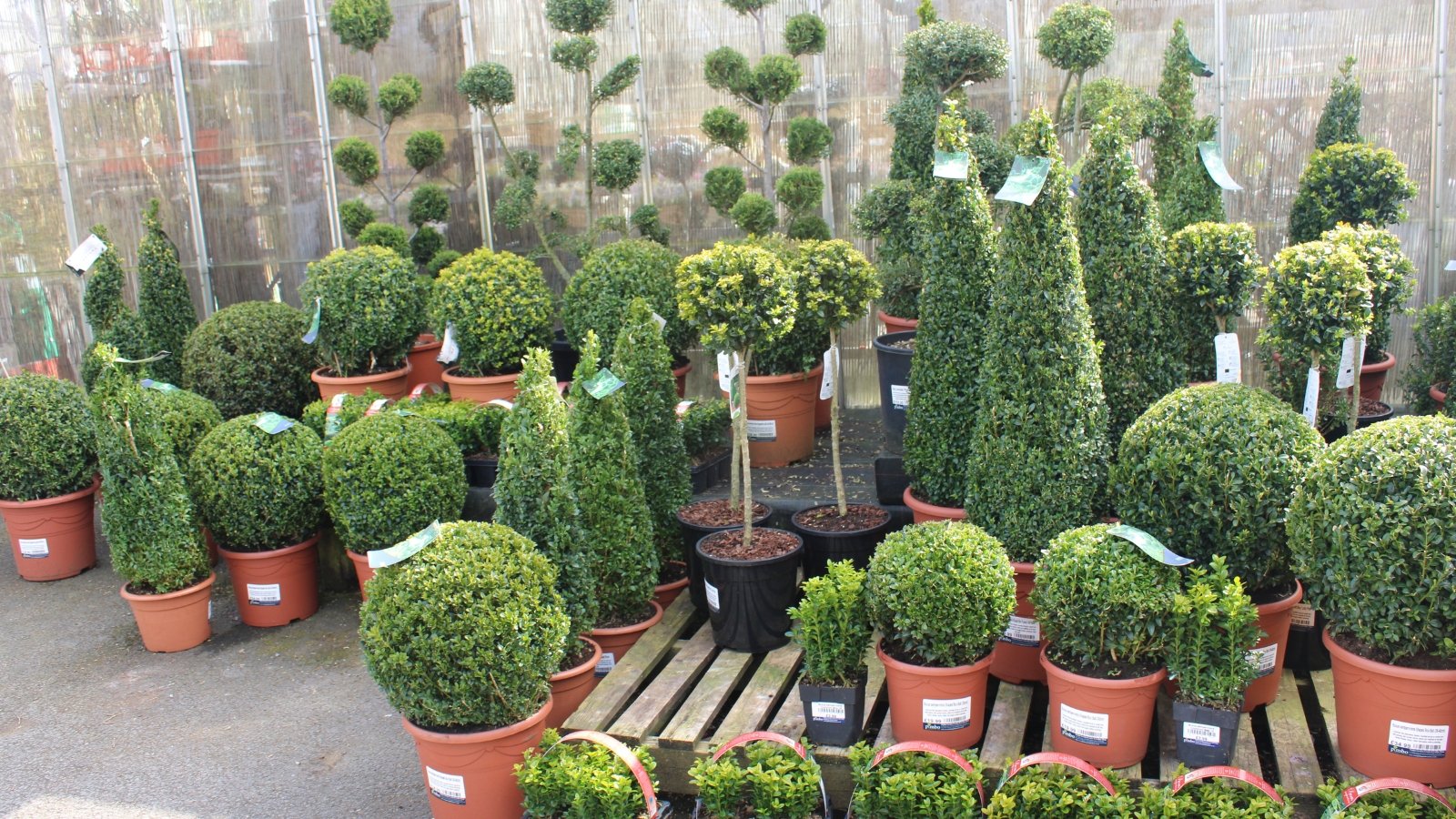
Do you have a budding sculptor or designer on your hands? They might enjoy creating a topiary! This project is fun for older kids because it involves using sharp garden tools like hand shears and loppers.
Select a plant with small, dense foliage. Boxwood is great for making topiaries. How structured you want to be is a matter of personal preference and what your kid will enjoy. If you think they will enjoy illustrating their project beforehand, encourage them to do so.
If that’s too involved, or they prefer to freehand, let them see how that works out. Even if they make a mistake, just like a bad haircut, it will grow back, and they can try again. They will love showing off their creation so find it a piece of prime real estate where it will get plenty of attention.
Create a Watering Sticker Chart
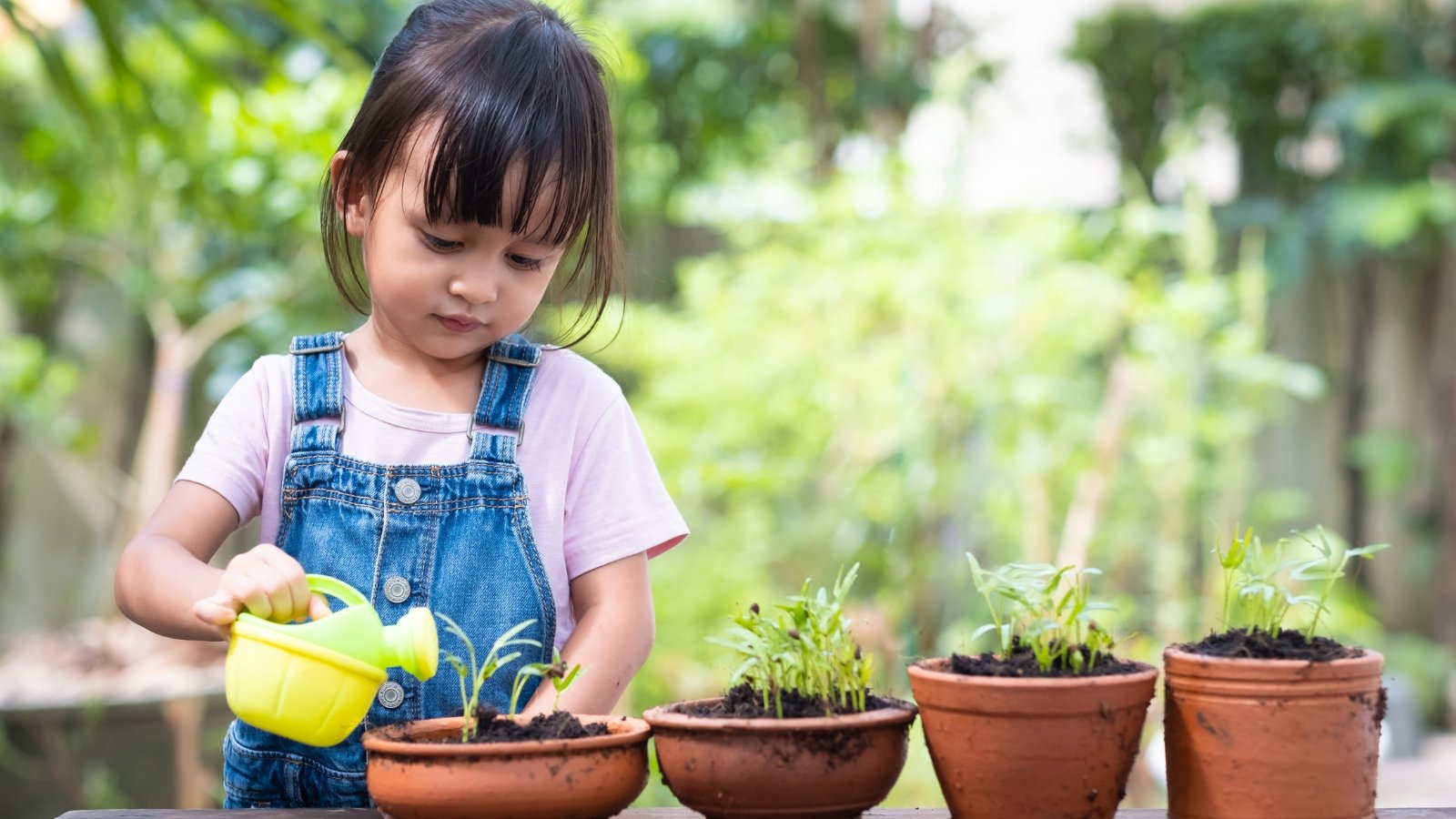
Sticker charts or star charts are a great motivational tool for youngsters. They love having a visual illustration of a tangible goal. This is a great way to get them outside watering your garden. If you have a larger family, include multiple kids and let them compete to see who can fill their chart the fastest.
You can be creative with your chart or keep it simple. It just needs to illustrate their hard work and set an attainable goal. Once they reach a certain point on the chart, set a reward and make them feel appreciated.
Plan for Pollinators
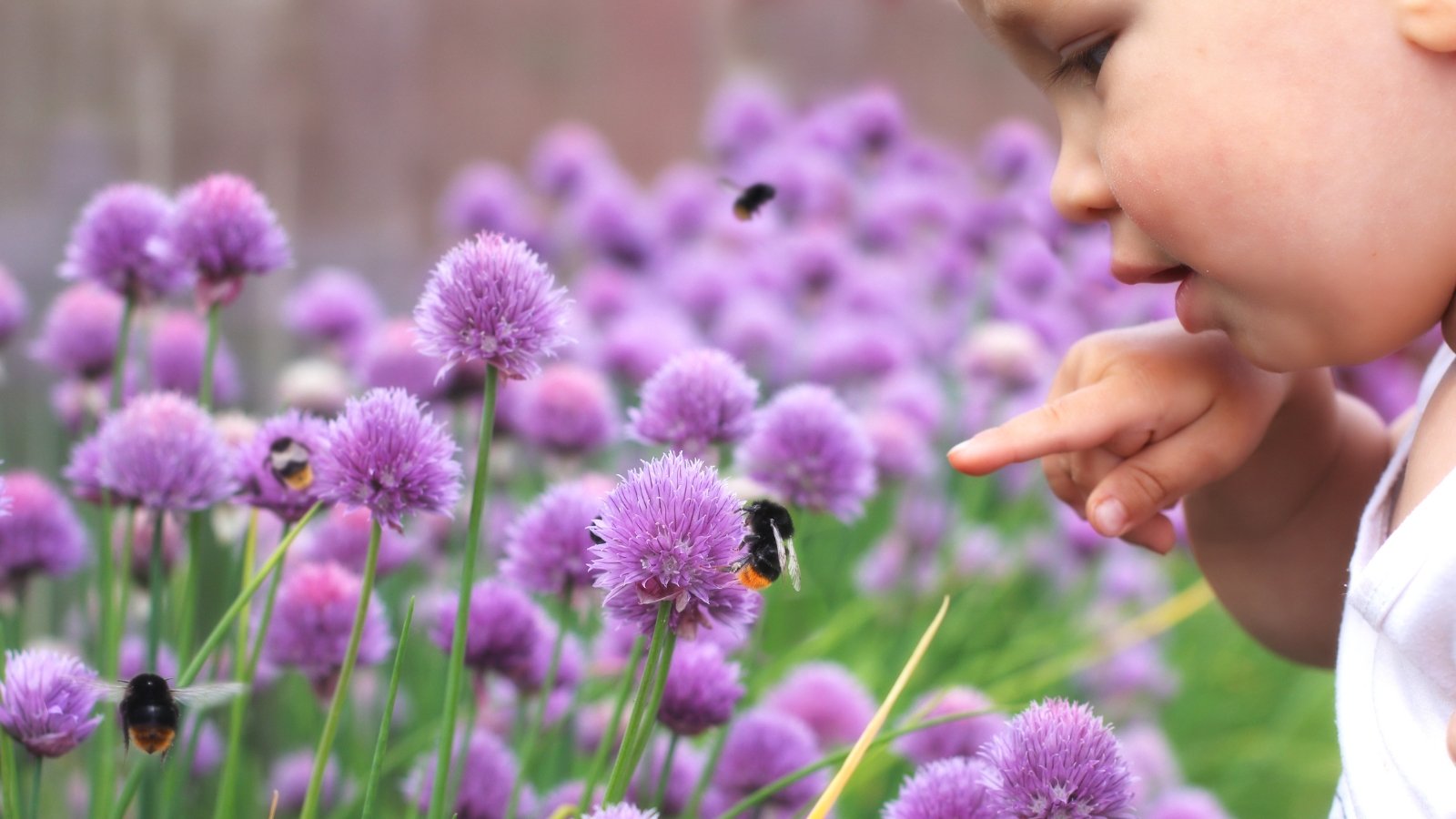
One of my favorite things to do outside with my children is go through the yard looking for different types of pollinators and insects. If your little ones love bees and butterflies, a pollinator garden is a great learning tool for them.
Research the type of pollinators in your area and what plants best support them. What types of butterflies are native to your region? Each butterfly has a host plant where it lays its eggs. Help kids plan out where to build the pollinator patch and which plants will feed the most different species.
You can have them create other pollinator-friendly elements in addition to plants. Bees and butterflies get very thirsty after all the hard work of collecting nectar. Create a watering station to place in your garden nearest to your pollinator-friendly plants.
Remember the birds. Hummingbirds, other birds, and bats are all pollinators, too. Add a bat house to the yard, consider a bird bath, and add feeders that will attract them to your landscape.
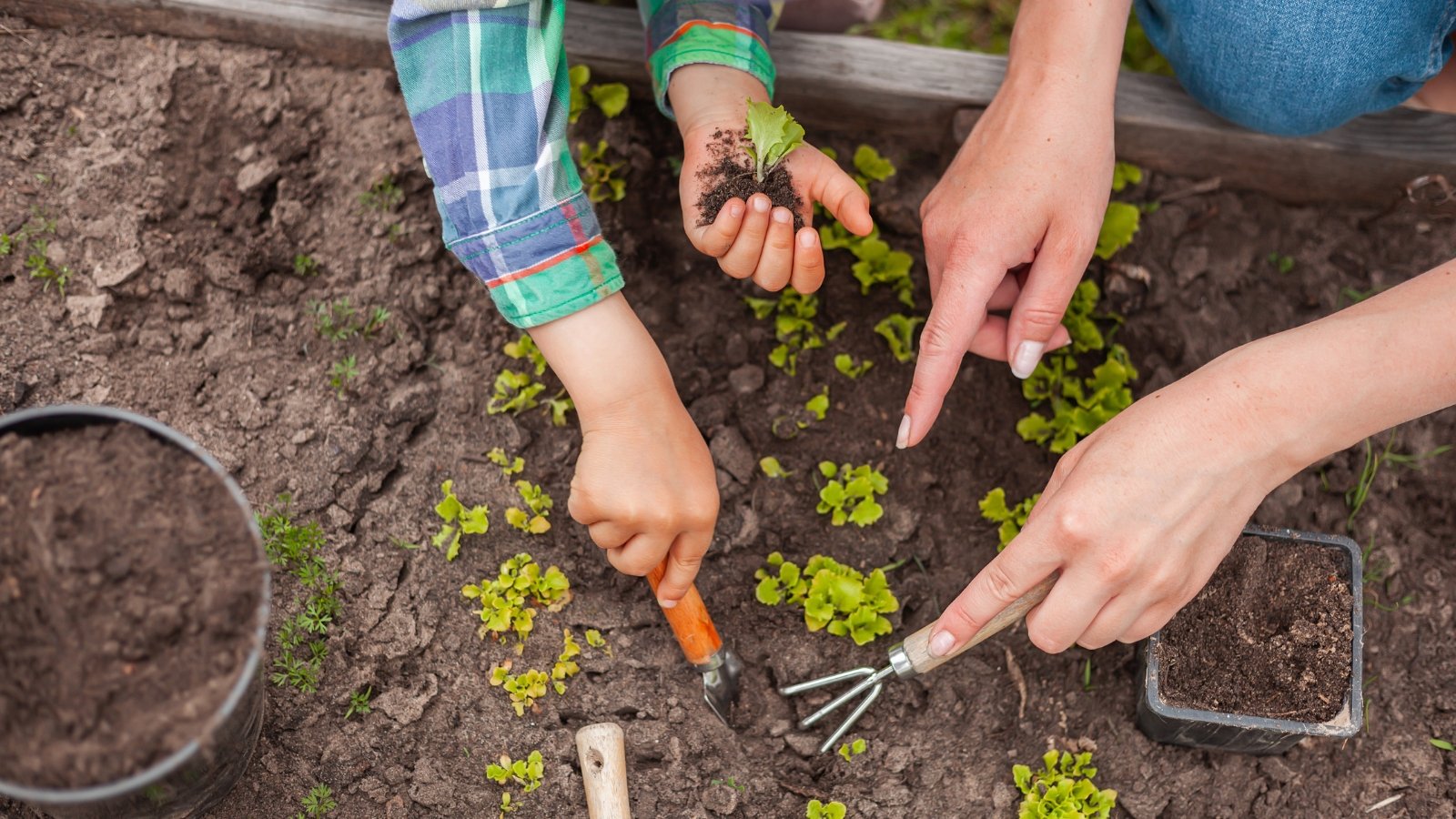
Little hands need little tools. Make gardening more appealing to kids by making it more accessible with fun, colorful, and easy-to-use tools. Find items like a spade, shovel, watering can, and rake suitable for their smaller hands.
Many children like to pretend to be carrying out adult activities like playing house or other jobs. If they have the size-appropriate tools to do these things, it feels more like they are succeeding and less like a struggle.
Go Worm Hunting
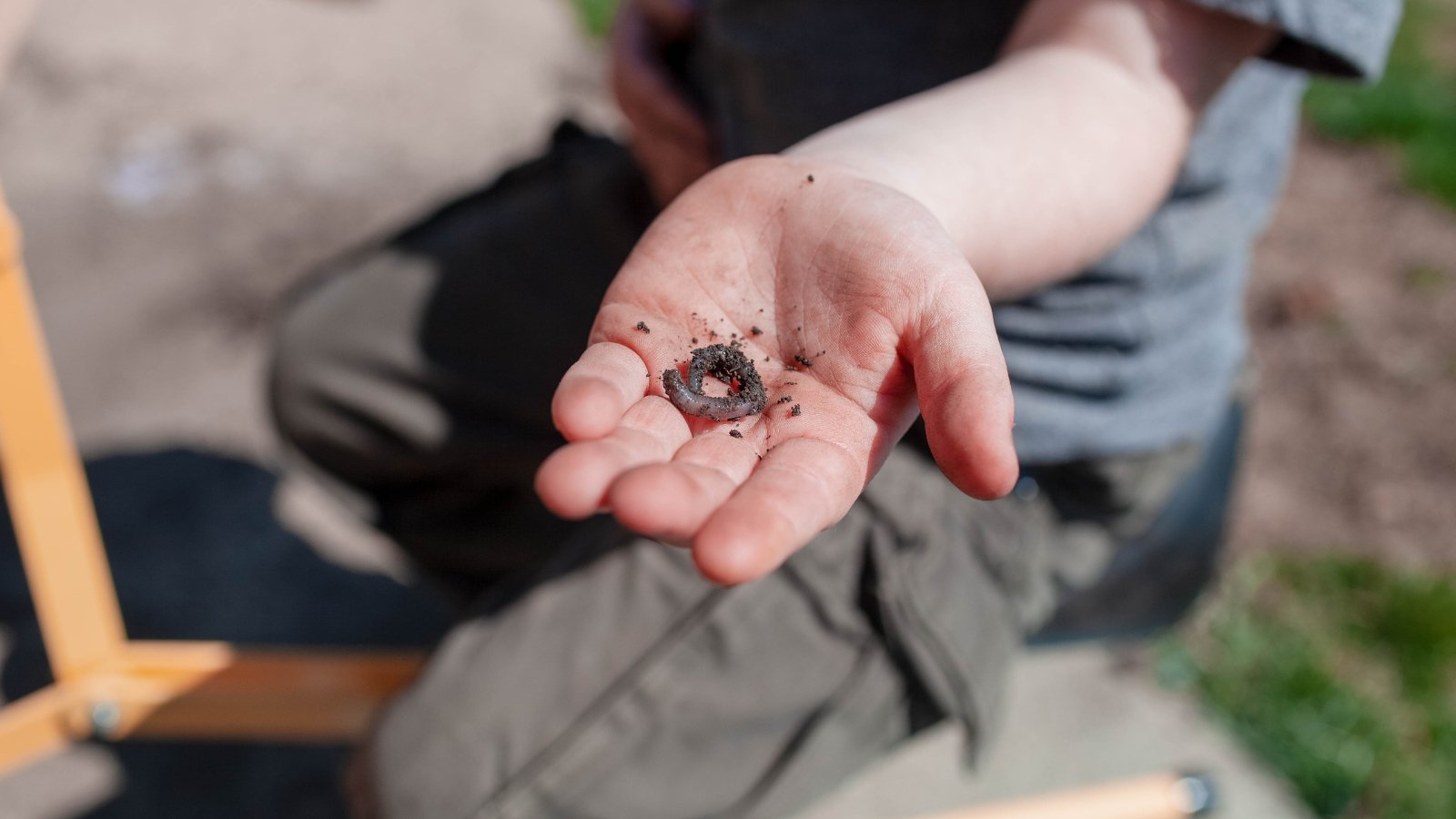
If you have kids who like to dig in the dirt, give them the task of finding worms to add to your beds. Worms are really helpful when it comes to enriching the soil. Teach kids about how worms eat decaying organic material like leaves and twigs and turn them into rich soil.
They will need a hose, their hands, or a small shovel. Watering the ground will attract the worms closer to the surface, making the soil workable. Kids can feel proud of improving the soil so the plants stay happy and growing.
Create a Scavenger Hunt
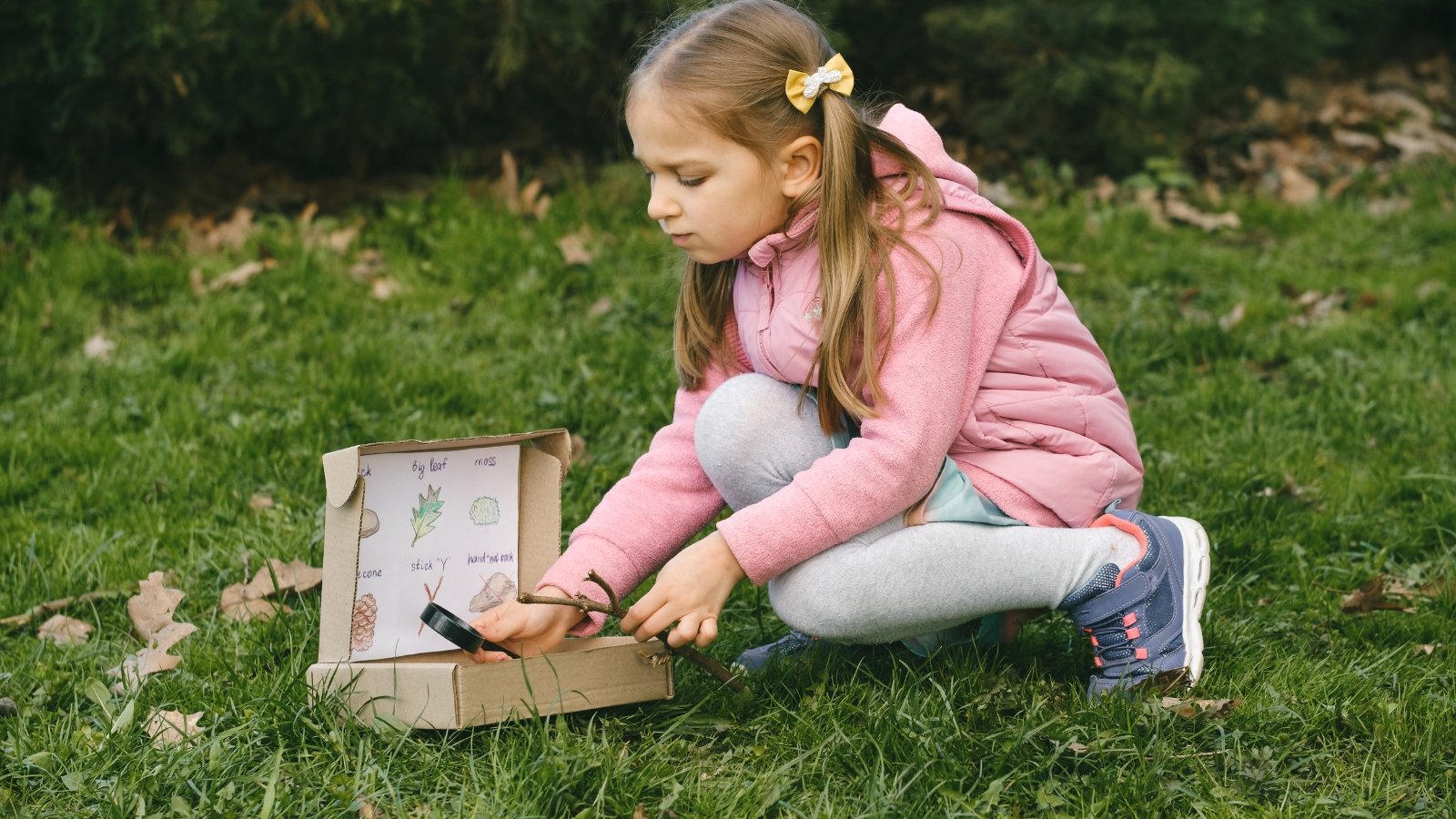
Games and scavenger hunts are fun tools to spark kids’ interest in gardening. Make a chart or list of things for them to find. You can let them collect specimens of certain things and take pictures to bring back and show you.
This is a great tool for helping them understand what exists in your yard. They can discover different leaf shapes and flower petal forms. There are so many wonderful and fascinating things to find.
Sometimes, it’s difficult to stop and observe without direction. Giving them a list or chart will help direct them to look for specific things they should be able to find. Help little ones along with this game. Pretend that you are discovering everything along with them.
Taste Testing

The vegetable garden can be a wonderful tool in itself. Let your child come out into the veggie patch to help you harvest vegetables for dinner. While you’re at it, let them taste-test different things for flavor or ripeness. This is a simple trick to getting kids out in the garden, and it will encourage them to eat more veggies, too!
Cut Flowers for a Friend
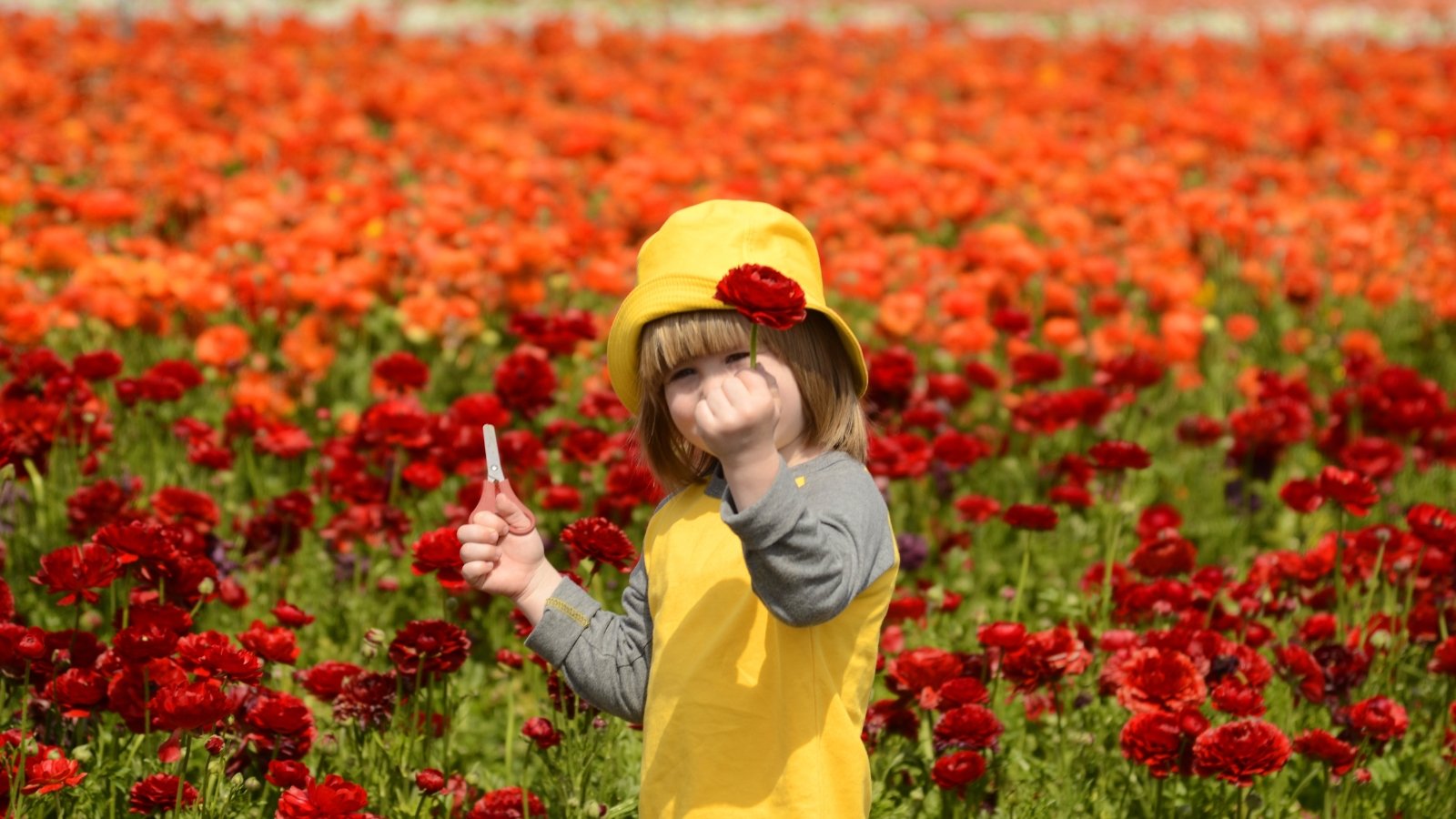
This final trick to get them out in the garden is my favorite. As a cut flower grower, I have specific beds designated specifically for cutting in my yard. We spend so much time telling kids not to pick flowers; it’s great to be able to let them do the opposite.
What’s even better is having them think of someone they want to share some love with. Is there a neighbor or friend who is under the weather? Maybe a teacher or a grandparent has a birthday coming up.
You don’t have to have a reason to give someone flowers; this is a great lesson in thoughtfulness and generosity. Instilling the joy of sharing what they grow with others will bring them, and those they share with, much joy throughout life.
Key Takeaways
Sometimes, an invitation is all it takes to convince a child to join you in the garden. Sometimes, it takes a little more effort. There are many fun tools and tricks to engage your little kids in the garden. Find the one that makes your child feel special and helpful.


